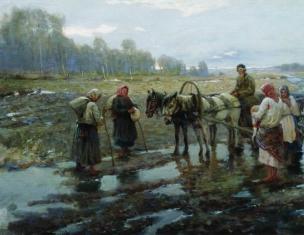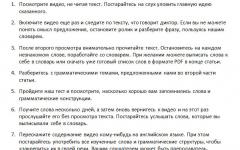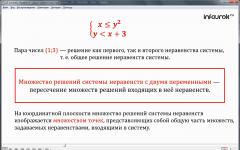The need to measure certain areas of land has appeared since the time of the resettlement of ancient tribes to other territories.
Plots of land were measured in units that varied depending on the era. Along with the evolution of mankind, agricultural affairs and industrial relations, the method of measuring land has improved.
Each nation had its own measures for measuring territory, which created inconvenience when foreign trade. In Russia, the first measurements were verst, mile, tithe, arshin and square fathom. In order to eliminate inconveniences, society decided to create a universal measure for measuring plots of land.
Only in 1960 did the square meter become the universal unit for calculating area, and distance and length began to be measured in meters.
Purpose
 IN Russian Federation The area of a plot of land is measured in hectares. In most cases, the size of the land area for payment of land tax is calculated in hectares (Ha). How to calculate 1 hectare? You can imagine this as much as you like both in the form of plans and in the form of tables.
IN Russian Federation The area of a plot of land is measured in hectares. In most cases, the size of the land area for payment of land tax is calculated in hectares (Ha). How to calculate 1 hectare? You can imagine this as much as you like both in the form of plans and in the form of tables.
Plan for calculating land area:
- The length of a certain part of the earth is measured;
- The width of the land plot is calculated;
- The area of the measured territory is determined.
- The resulting calculation result is converted into points and its own coefficient is used.
Ha are used in the areas of urban planning, in agriculture, when designing land management works. In addition, this unit of measurement is also used to calculate the size of a football field.
The units of measurement of area also include the so-called hundred (Ar) - a measure of the calculation of a land plot during purchase and sale.
Hectare
A hectare is commonly understood as a unit of measurement of area. In size, 1 Ha is equal to the area of a square with a side of 100 m. The concept itself appeared in human speech after 1917, and its abbreviated version - Ha - was formed 13 years later.
If the width and length of the measured area is 100 m, its area is 1 Ha (10,000 m²).
Area calculation
- To find out the area of the plot, you need to multiply the resulting length by the width;
- If the figure is more than 10,000 m², then the land plot is more than 1 hectare;
- In order to determine the exact area, the resulting figure in hectares should be divided by 10,000.
Sotka
The term weaving means a plot of land with an area of 1 Ar (the diameter of a rectangle with a side of 10 m, a measure of territory in France).
1 Ar is equal to 100 m², respectively 0.01 hectares. For a visual example, mark a starting point, take 13 small steps, turn 90 degrees and walk the same amount. The resulting square as a result of a little calculation is the Ar of the land plot.
Weaving is also called one hundredth of something. This type of calculation is convenient both for construction and sale, and for sowing land plots.
Ratio of hundred square meters to hectare
 People who are interested in buying a plot of land often ask the question: how many acres are in a hectare? After all, it is there that we often encounter such a concept as weaving. This is where the question arises: how many acres are included in 1 hectare?
People who are interested in buying a plot of land often ask the question: how many acres are in a hectare? After all, it is there that we often encounter such a concept as weaving. This is where the question arises: how many acres are included in 1 hectare?
Based on the previously stated text that 1 hectare is equal to 10,000 m², it is necessary to calculate how many acres can fit into 1 hectare. Let us recall that 1 Ar – square with a diameter of 10 x 10.
So, 1 Ha consists of 100 Ar. With the intention of converting Ar to hectares, you must follow one of the following methods:
- We divide the required number of Ar by 100. The resulting figure is the space of the land area in hectares;
- We multiply the required number of Ap by 0.01.
Let's consider the ratio of calculus measures using the table as an example:
If there is a need to convert hectares to acres, you must use this algorithm:
1000: 100 = 10 (An area of 1 thousand is equal to 10 hectares)
In case you don’t have the Internet or a calculator nearby, and you have to calculate hectares and acres yourself, you need to know some features of converting these units:
- 1 hectare is equivalent to 10,000 m²;
- 1 weave is equal to 1 Ar, which, in turn, is equal to 100 m²;
- 1 Ha includes 100 Ar.
Ap/m² ratio
 When calculating how many m² are in Ar, you should remember the table above, which indicates that 1 Ar is equal to 100 m². When calculated, this will be represented by the following equation: 10 x 10 = 100 m².
When calculating how many m² are in Ar, you should remember the table above, which indicates that 1 Ar is equal to 100 m². When calculated, this will be represented by the following equation: 10 x 10 = 100 m².
Despite the fact that these measures represent a degree of area calculation, they are still used in various cases. So, a square meter most often used when calculating the size of living space and small land areas, hectare - when building a city and large plots of land for agriculture (farms), and Ar are used to measure a territory with a duration and scale of no more than one hundred meters.
Not only schoolchildren, but also adults need to be able to calculate area. Many people often ask questions: how many meters are in one hundred square meters, one hectare, or how 1 m2 is calculated. How to do it right?
What is measured in hectares
The use of units of measurement is entirely related to the different sizes that may most often be found in a particular industry. To determine the size of countries and cities, square kilometers are usually used. A hectare is mainly needed to determine the area of land and forest plots. Agricultural areas should include large territories farmers or businesses.
Area of 1 hectare in meters
A hectare, like most units of area, is calculated by multiplying the length by the width. It is worth noting that this rule only applies if we are talking about a regular and level piece of land, that is, square or rectangular.
It is necessary to take measurements of the land plot on two sides and multiply these two sides.
A flat plot with an area of 1 hectare has dimensions of 100 by 100 m in length and width. Of course, there are other sizes if we are talking about a rectangular area.
To officially determine the size of a land plot, it is necessary to invite representatives of land management organizations.
The Russian designation for hectare is ha. If a person knows the basic rule for measuring the area of a square, then he can easily calculate the area of 1 hectare: 100 m times 100 m will equal 10,000 square meters. m.
Perimeter of a hectare in meters
To perform an oral conversion, certain rules must be followed. First of all, you should decide on the direction of the account. If there is a need to convert to standard units of area measurement, then you need to clearly remember how many square meters are contained in 1 hectare, and then divide by 10,000. Accordingly, in the opposite case, you will need to perform the opposite actions.

It is also important not to make a mistake with zeros, since if you lose at least one of them, the calculations will be completely incorrect. Be sure to equate the results obtained, write them down and do not forget about the second degree of meters, since a lost square is a gross mistake.
Thus, every person has the opportunity to use the most important skill. The main thing is to be able to correctly express quantities, remember to be careful when converting quantities, when working with zeros and decimal places.
Many values have been invented for convenience so that everyone can choose the most convenient calculation.
Only after realizing the importance of entering auxiliary hectares comes simplicity and ease in all kinds of calculations.
How many acres in one hectare- this question may be of interest to people who are planning to buy or rent a large area of land. Having personal property, for example a country house, we most often come across such a measure of land area as a hundred square meters. An ordinary summer resident does not need hectares of land. It is enough to build a house, arrange a flower bed, a barbecue, and even a swimming pool - that’s all the needs of a summer resident. But when planning, for example, to do agriculture, you won’t be able to limit yourself to hundreds of acres; hectares of land are of interest. And here the question inevitably arises: 1 hectare - how many acres makes up. To be honest, one hectare is clearly not enough to run a serious agricultural business. And people with experience know the basics well school curriculum, especially when it comes to land resources.
A hectare is a metric unit of measurement of area. To imagine a hectare, it is enough to imagine a square with a side of 100 meters. Knowing from a school mathematics course how the area of a square is measured, it is easy to determine the area of a hectare.
1 ha = 100 x100
One hectare corresponds to 10,000 square meters. To understand how many acres in 1 hectare, you now need to remember what a hundredth is, how the area of one hundredth is calculated and calculate how many hundredths can fit in one hectare.
One weave is a square, each side of which is 10 meters. The area of 1 hundred square meters is equal to:
1 weave = 10 x 10
One hundred square meters equals 100 square meters. To calculate how many acres in 1 hectare, it is necessary to compare the area occupied by a hundred square meters and a hectare.
1 hundred square meters = 100 sq.m.
1 hectare = 10,000 sq.m.
10,000 sq.m. / 100 sq. m = 100
From the calculation it is obvious how many acres are in a hectare. There are 100 acres in a hectare, and a hundredth is a hundredth of a hectare. A plot of 100 square meters is one hundred square meters of land. Here are 100 such plots and you already have a hectare of land.
Hundreds are used to determine the area of dacha garden plots, as well as construction sites. To determine large areas, such as cities, for example, the unit of measurement for area is 1 square kilometer. If you noticed, in reference literature with characteristics of states and cities, the area is indicated in square kilometers. But for plots of land with a side of more than 100 meters, but less than 1 kilometer, it is more convenient to use a unit of measurement - 1 hectare.
It is difficult for people accustomed to calculating area in square meters to visually imagine how many acres are in hectares, and it can be just as difficult to convert hundreds of acres into hectares and vice versa.
A square kilometer is a square with each side measuring 1000 meters (1 km), and a hectare is a square with a side of 100 meters.
The area of 1 square kilometer is 1 million square meters.
1 sq. km = 1000 x 1000
Area of 1 hectare - 10,000 sq. meters (1 ha = 100 x 100)
Therefore, 1 square kilometer is 100 times larger than 1 hectare. We determine similarly: 1 hectare - how many acres there are in the composition. One hundred square meters covers an area of 100 square meters. Therefore, in comparison with a hectare, a hundred square meters is 100 times smaller than a hectare.

Expert commentary
Igor Voropaev - leading lawyer at Prosper-Consulting
Consultant of the PropertyExperts portal
IN international system measure hectare (according to the dictionary the name is from the Greek word hecto - one hundred, abbreviated hect.) is the most used, because its “trick” is that with its help it is most convenient to measure areas whose area is more than ten thousand square meters (do not use centimeters or dm2 in this case), plus make a mistake in converting 1 hectare to any other unit of measurement that can be called , (even non-systemic, for example, a yard, an acre), is almost impossible.
However, if, for example, using this unit still continues to be difficult for you, then you can easily find a free converter calculator online using the advice of the forum, and use it for all your calculations. This way you can reduce the time that will be used for calculations. In general, with the goal of helping the client understand how much land he needs and find the exact dimensions, we use this particular calculator, as well as a visualization program that connects real and reduced scales.
Instantly, it can form exactly the same pattern as in life, but smaller. In this case, looking at an approximate “photo” of their future site, clients always understand what they need. I would advise all construction companies to take a closer look at this software.
In addition, the regulation on the mandatory use of units SI set out in the interstate standard GOST 8.417-2002, currently in force in Russia, which lists the units physical quantities, approved for use, their international and Russian designations are given and the rules for their use are established.
International System of Units SI - the most used system of units in the world as in everyday life, and in science and technology. Currently SI accepted as the main system of units by most countries in the world and is almost always used in the field of technology, even in those countries where traditional units are used in everyday life.
SI defines 7 basic units of physical quantities and derived units (abbreviated as units SI or units), as well as a set of attachments.
SI also establishes standard abbreviations for units and rules for writing derived units.
Basic SI units
- kilogram (kg, kg) - unit of mass
- meter (m, m) - unit of length
- second (s, s) - unit of time
- ampere (A, A) - unit of electric current
- mole (mol, mol) - unit of amount of substance
- candela (cd, cd) - unit of luminous intensity
- Kelvin (K, K) is 1/273.16 part of the thermodynamic temperature of the triple point of water:
- degree Celsius (°C) - a widely used unit of temperature measurement, used in SI along with kelvin
Conversion to degrees Celsius:
Within SI The basic units are considered to have independent dimensions, that is, none of them can be derived from the others.
Derived units are obtained from basic units using algebraic operations such as multiplication and division. Some of the derived units in SI assigned their own names, for example, the unit radian.
SI prefixes must be used before the names of units. They mean that one must be multiplied or divided by a certain integer, which is a power of 10, a number of times.
Decimal prefixes are used to reduce the number of zeros in the numerical values of physical quantities.
For example:
- the prefix "kilo" means multiplication of the original unit meter per 1000 (kilometer = 1000 meters)
- the submultiple prefix “milli” means multiplication of the original unit meter by 10 -3 (millimeter = 0.001 meters)
- the submultiple prefix “deci” means multiplication of the original unit meter by 10 -1 (decimeter = 0.1 meters)
Area units
Regarding units of area that are derived from the basic unit of length meter, the list of names looks like this:
- length
- unit of measurement - meter
- designation (Russian) - m
- designation (international) - m
- square
- unit of measurement - square meter
- designation (Russian) - m 2
- designation (international) - m 2
Explanation
Meter - the length of the path traveled by light in a vacuum during a time interval
1/299792458 seconds (XVII General Conference on Weights and Measures (GCPM), 1983, Resolution 1).
The XXV CGPM, held in 2014, decided to continue work on preparing a new revision of the SI, including a redefinition of the meter, and tentatively planned to complete this work by 2018 in order to replace the existing SI with an updated version at the XXVI CGPM in the same year.
A widespread system in Russia for measuring land areas (non-systemic in relation to SI)
- 1 weave = 10 m x 10 m = 10 m x 10 m = 100 m 2
- 1 hectare = 1 ha = 100 m x 100 m = 10000 m 2 = 100 acres
- 1 square kilometer = 1 km 2 = 1000 m x 1000 m = 1 million km 2 = 100 hectares = 10,000 acres
Reciprocal units
- 1 m2 = 0.01 hundred square meters = 0.0001 ha = 0.000001 km2
- 1 hundred square meters = 0.01 hectares = 0.0001 km 2
Conversion table for area units
| Area units | 1 sq. km. | 1 Hectare | 1 Acre | 1 Sotka | 1 sq.m. |
| 1 km 2 | 1 | 100 | 247.1 | 10.000 | 1.000.000 |
| 1 hectare | 0.01 | 1 | 2.47 | 100 | 10.000 |
| 1 acre | 0.004 | 0.405 | 1 | 40.47 | 4046.9 |
| 1 weave | 0.0001 | 0.01 | 0.025 | 1 | 100 |
| 1 m2 | 0.000001 | 0.0001 | 0.00025 | 0.01 | 1 |
- Hectare
a unit of area in the metric system used to measure land plots.
Abbreviation:
- Russian - ha
- international - ha
1 ha equal to area square with side 100 m
The name “hectare” is formed by adding the prefix “hecto...” to the name of the unit of area “ ar»:
1 ha = 100 are = 100 m x 100 m = 10,000 m 2
- Ar - unit of area in the metric system of measures, equal to the area of a square with a side of 10 m:
- 1 ar = 10 m x 10 m = 100 m 2
- 1 tithe = 1.09254 hectares
- Acre
land measure used in a number of countries using English system measures (UK, USA, Canada, Australia, etc.).
1 acre = 4840 sq. yards = 4046.86 m 2
The most commonly used land measure in practice is the hectare - the abbreviated designation ha:
1 ha = 100 are = 10,000 m 2
In Russia, a hectare is the basic unit of measurement of land area, especially agricultural land.
On the territory of Russia, the unit “hectare” was introduced into practice after October Revolution, instead of tithe.
Ancient Russian units of area measurement
- 1 sq. verst = 250,000 sq. fathoms = 1.1381 km 2
- 1 tithe = 2400 sq. fathoms = 10,925.4 m 2 = 1.0925 ha
- 1 tithe = 1/2 tithe = 1200 sq. fathoms = 5462.7 m² = 0.54627 ha
- 1 octopus = 1/8 tithe = 300 square fathoms = 1365.675 m 2 ≈ 0.137 ha
The area of land plots for individual housing construction and private plots is usually indicated in acres
One hundred- this is the area of a plot measuring 10 x 10 meters, which is 100 square meters, and therefore is called a hundred square meters.
Here are some typical examples of the size that a plot of land with an area of 15 acres can have:
In the future, if you suddenly forget how to find the area of a rectangular plot of land, remember a very old joke. “Grandfather asks a fifth-grader: “How to find Lenin Square?” And he answers: “You need to multiply the width of Lenin by the length of Lenin” :)))
It is useful to familiarize yourself with this
- What can be built on plots for peasant (farm) farming (peasant farming) - read
- With scales used in Russia topographic maps Can .
- You can find out about the new VRI Classifier - 2019
- From January 1, 2018, the exact boundaries of the plot must be recorded in the cadastral passport, since buying, selling, mortgaging or donating land without accurate description borders will simply be impossible. This is regulated by amendments to the Land Code. A total revision of borders at the initiative of municipalities began on June 1, 2015.
- On March 1, 2015, a new Federal law“On amendments to the Land Code of the Russian Federation and certain legislative acts of the Russian Federation” (N 171-FZ dated June 23, 2014, in accordance with which, in particular, the procedure for purchasing land plots from municipalities has been simplified.You can familiarize yourself with the main provisions of the law.
- With regard to the registration of houses, bathhouses, garages and other buildings on land plots owned by citizens, the new dacha amnesty will improve the situation








